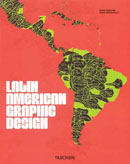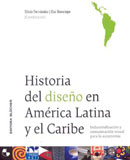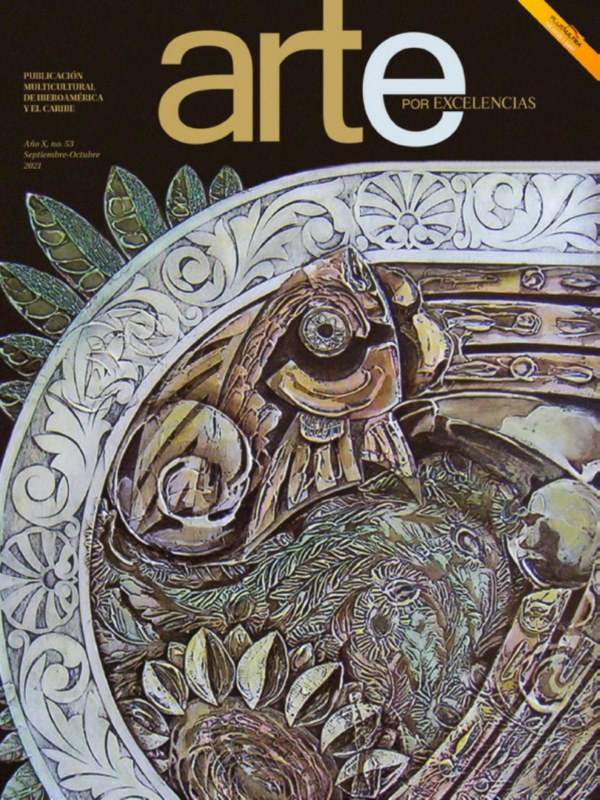Venturing into the brain-racking task of mapping out and defining the connections in the diversity of identities and cultures lodged in the Latin American and Caribbean region might seem to be a somewhat worthless, yet necessary effort based on the fact that all the richness of a continent cannot be culled in just a few hundred pages. However, any endeavor of this nature takes the kind of endurance and willingness I always feel grateful for and indebted with. The launch last year of a couple of volumes on design in Latin America and the Caribbean (Spanish-speaking) is a wakeup call on the need to promote the work of a bevy of authors that has broken the grounds of a well-rooted and valuable visual memory. In fact, Latin American Graphic Design and A History of Design in Latin America and the Caribbean. Industrialization and Visual Communication for Autonomy speak volumes of a tradition found in the work of hundreds of designers from an assortment of influences, walks of life and creative interests. Like in all cultural maps, both books choose unitary ways of communication in our region. Otherwise, how in the world could we cotton on to the enormous task of coming up with a visual product despite the fact that we handle international codes so commonplace in old-timed avant-garde design, whether they cling to elements that go beyond the lighthearted use of color1 or resort to local and popular referents to freshly and creatively convey a design concept different to the English-speaking or European ones? As paradoxically as it might seem, Felipe Taborda, an outstanding Brazilian designer and author of the essay entitled Latin Culture on the Taschen book, calls for a somewhat panoptic layout that’s open to the reader and stripped of original hierarchies, as it was expected. It’s important to point out that perhaps the volume’s inclusive-oriented intention made a dent in the care for the edition because, regardless of inaccurate dates and a few mistakes when matching image and information –I admit I picked them up given my publishing obsession– Latin American Graphic Design is a must-have book for the plurality and quality of the texts compiled in it: over 200 authors, among designers and studies or designing groups. I believe the significance of this title lies in its being a kaleidoscope of images that, when viewed through the same prism, presents boldface and emerging names, provides connections as it suggests websites, companies, associations, contacts and publications. Anyone can nearly aver this is a guidebook, a collection of samples for in-depth studies to come and in which the visual weighs in far more than the conceptual analysis.2 If we take into account that contemporary culture embraces an indiscriminate blend of images, sensations, news updates, sometimes in a simultaneous way, we could assert that Latin American Graphic Design is the result of the media-hyped culture since it exploits its generative, somewhat associative ability within a horizontal structure that makes room for nearly everyone. Even though there’re clear perils of falling into the superficial, the achievement of this book now brought to the general public3 banks on the continent’s finest design making of the past fifty years. On the other hand and also in its bid to make up for the lack of studies that promote thinking and the history of design in the region, A History of Design in Latin America and the Caribbean. Industrialization and Visual Communication for Autonomy has now come out. I think the one thing that singles out this book is the earnestness it hinges on to reflect a case-by-case assessment of both graphic and industrial production. It’s indeed a sort of partial genealogy that looks into the material culture of some of the region’s countries –Mexico, Cuba, Brazil, Argentina, Chile, Venezuela, Colombia, Ecuador and Uruguay– only to make us a part of the history sung by their own makers.4 And it’s this view of its own what paves the way for a fast-tracked connection with the reader. We feel from the first part of the volume that those who tell their respective stories do so from a very personal and committed standpoint. The initial hypothesis, as Silvia Fernandez clarifies in the forewords, seeks to make good on the assumption that in the 1960s […] the development of design […] was conditioned by the public sector, from the creation of linking bodies and programs pieced together by the ministries of economy, industry and trade. It was a period in which design was part of the political discourse in terms of autonomy.5 In the same breath, the works are clustered under the same fleeting timeframe that spans from 1950 to 2000, though some authors decided to lengthen it in keeping with their interests. Another visible achievement of this book is the confrontation it establishes with other traditions and concepts of contemporary design. As a matter of fact, the volume’s second edition includes essays that explore the to-ing and fro-ing between Europe and Latin America (inter-influences and personal contributions),6 the relationship between design and craftworks, the footprint stamped by the new notions and needs when teaching this subject matter, the theory of objects, as well as the sustainability and its application in the field of design. Make no mistakes about it; the main contribution of A History of Design in Latin America and the Caribbean… is in its critical texts because the image is merely a visual support, but never the nitty-gritty of the proposal. In this sense, I think it would have been interesting for this book to move further into the visual level and make it far more attractive. I guess the conceptual gap doesn’t have to go eyeball to eyeball with the creative boldness, visually speaking. On the contrary, they should go hand in hand. Nevertheless, its rigor is recognized for its being a “provisory map” that allows for new pathways toward research. The fact that this time around it didn’t include an important bunch of countries and topics related to and dealing with contemporary design leads us to believe that in the future –in the near future, we hope– just another exploratory volume, equally relevant for the study of design in the region, will be put out. Both volumes bear out the myth about the existence of a Latin American and Caribbean design, marked by diversity and visual wealth, in the middle of uncertain economic times and a history pocked with political and social contradictions. Just thumb through their pages and you’ll understand there’s a tradition, a reality and a future that must be studied, imagines, conceived in terms of our own projects as autochthonous nations because: “A society that relinquishes its right to take part in the project of material and communicational contemporary culture, it’s simply denying its possibilities for the future”.7 I therefore applaud the coming of Latin American Graphic Design and A History of Design in Latin America and the Caribbean. Industrialization and Visual Communication for Autonomy. From their respective proposals, they add two complementing visions with plenty of room for further contributions. They open the gateways –that much is true. Time is now to hold out and not let decades go by without a continuation. With the degree of steadiness that nearly everything takes, we could make them move far beyond the boundaries of the daily routine. Latin American Graphic Design: Felipe Taborda/Julius Wiedemann, Taschen publishing house, Cologne, and A History of Design in Latin America and the Caribbean. Industrialization and Visual Communication for Autonomy: Silvia Fernandez/ Gui Bonsiepe (comp.), Blücher publishing house, Sao Paulo.


Publicaciones relacionadas

Obras de García Márquez para celebrar Halloween
Octubre 30, 2024
Cerrado por obras: Museo Sorolla
Octubre 29, 2024
La Mascarada llena de color y vida a Costa Rica
Octubre 28, 2024















